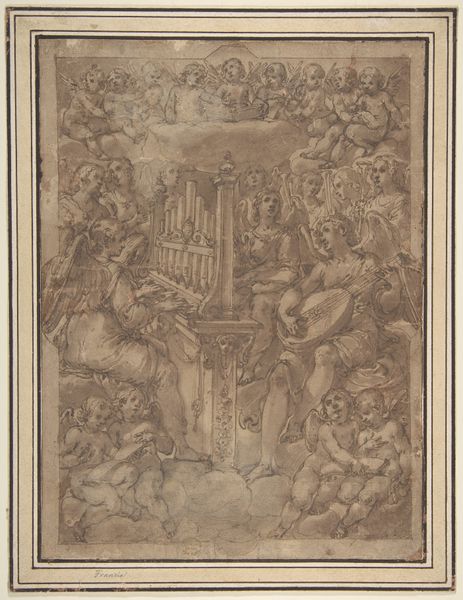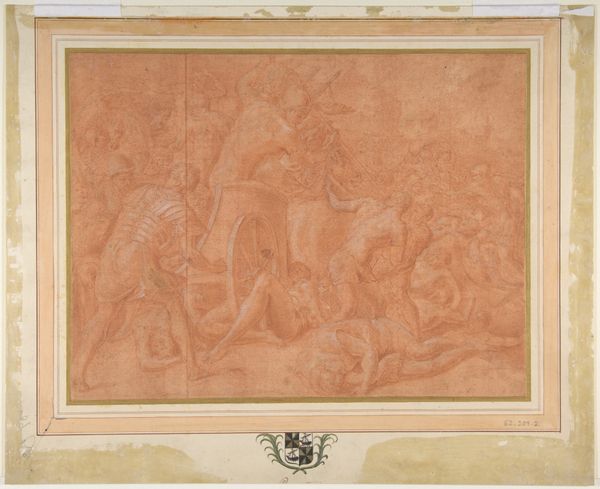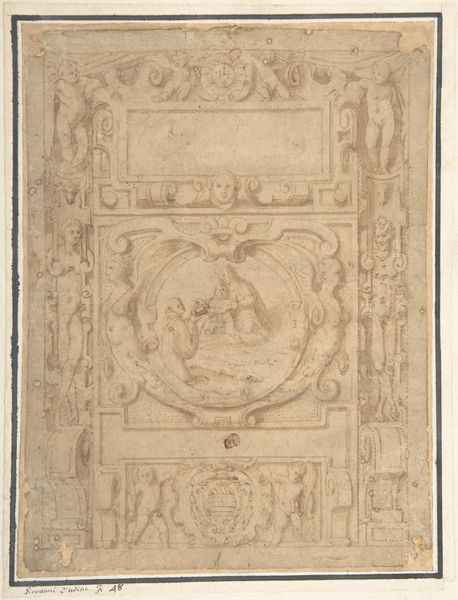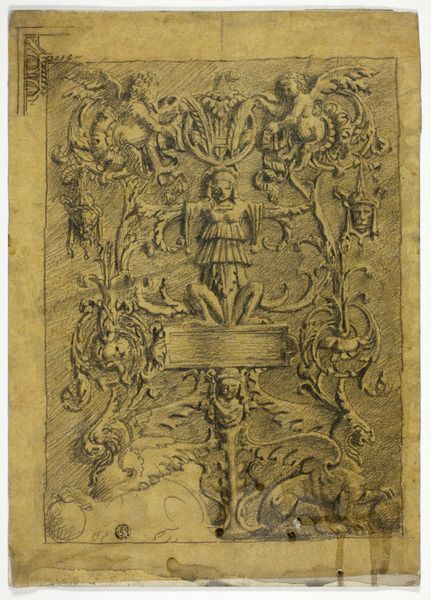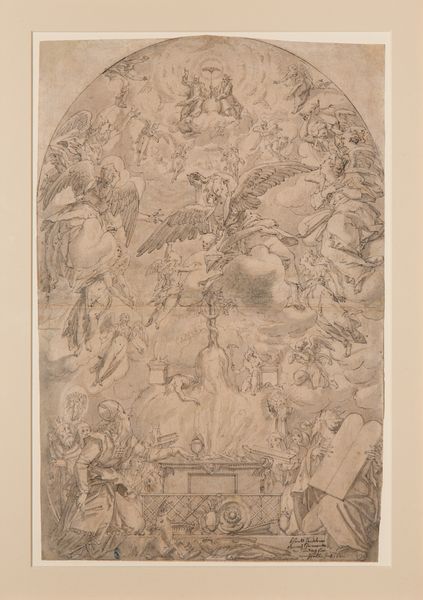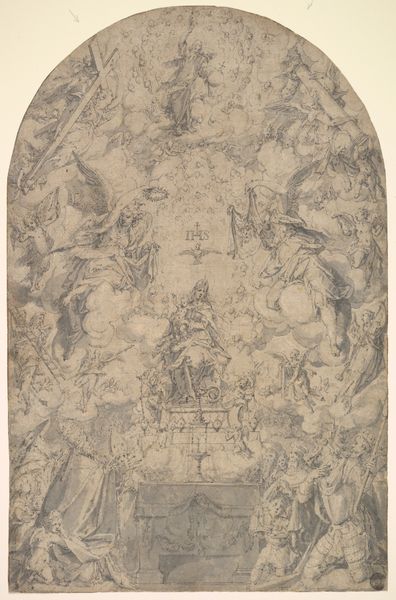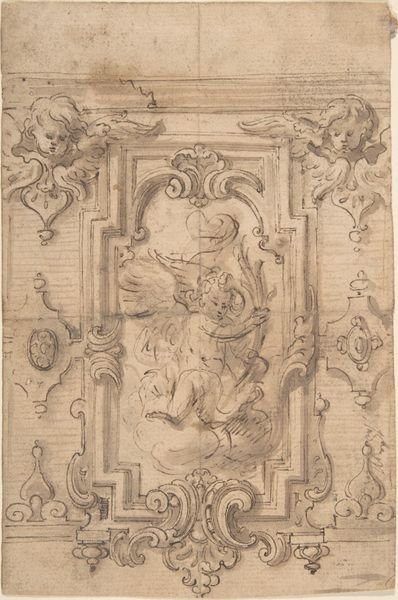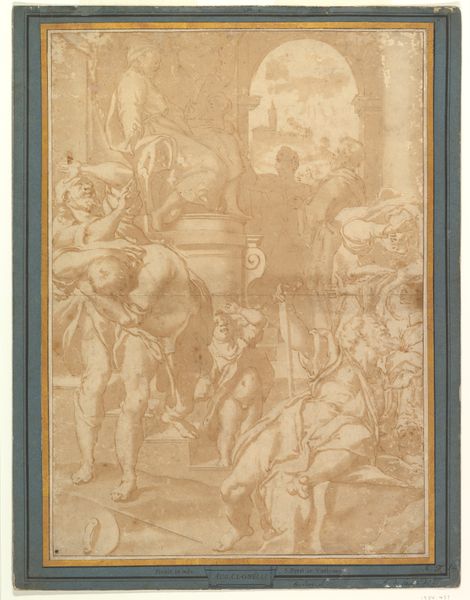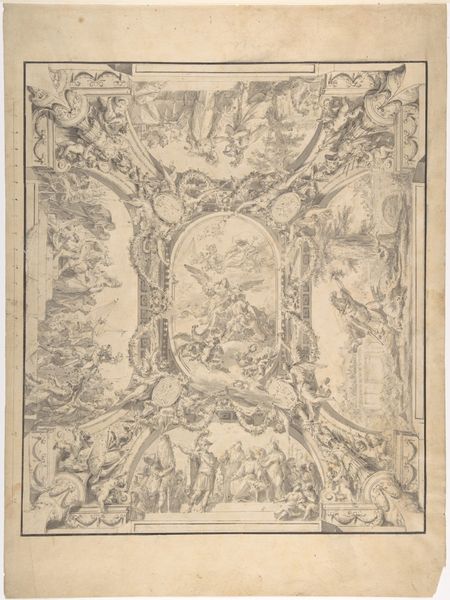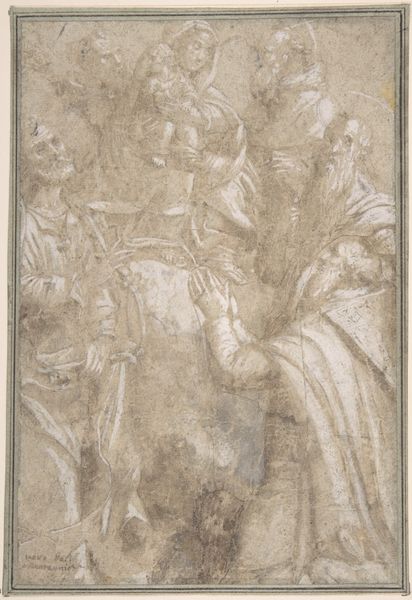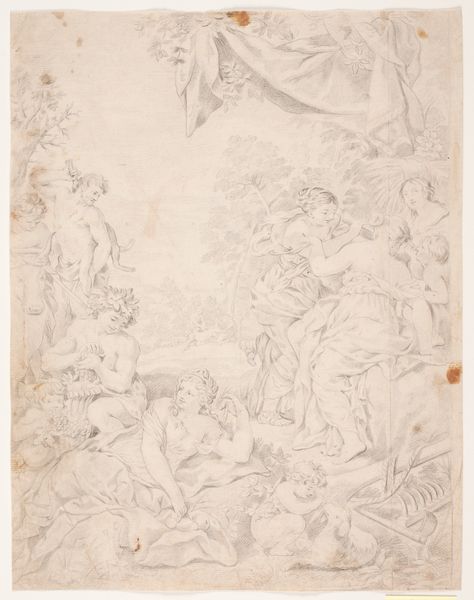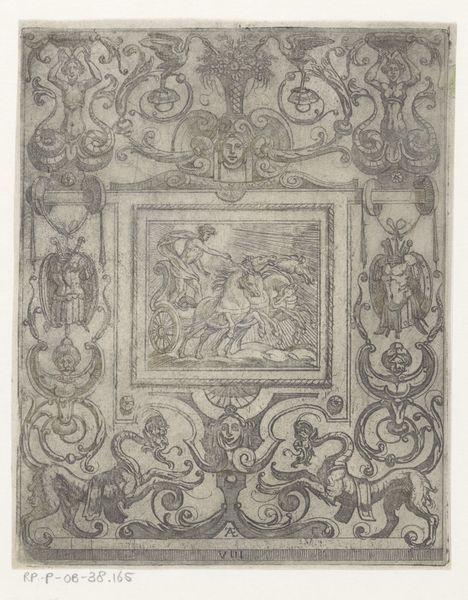
drawing, print, paper, ink, graphite
#
drawing
# print
#
sculpture
#
landscape
#
figuration
#
paper
#
11_renaissance
#
ink
#
men
#
water
#
graphite
#
history-painting
#
italian-renaissance
Dimensions: 372 × 250 mm
Copyright: Public Domain
Editor: This is a print titled "Rape of Proserpina" from the 1550s, held here at the Art Institute. The artist is unknown, and the piece is rendered in ink, graphite, and possibly other drawing media on paper. Its composition feels really chaotic, a swirl of figures all crammed together. What do you see in it? Curator: The dynamism certainly stands out. Observe the swirling composition, how it echoes the drama of the abduction itself. The artist, though unknown to us by name, manipulates line and form to convey movement. Notice, for instance, how the upward thrust of Pluto's chariot is countered by the desperate, downward reach of Proserpina. The composition functions almost like a vortex, doesn’t it? Editor: Yes, definitely. The diagonal lines of the figures and horses really emphasize that sense of spiraling. Do you think the medium contributes to the feeling of chaos? I mean, if it were a painting, maybe it would feel different? Curator: An interesting question. The graphic nature of the print allows for a certain rawness, an immediacy of line that perhaps a more polished medium would obscure. Think about the textural quality of the hatching and cross-hatching, it creates a surface tension, doesn't it? This in turn echoes the thematic violence. Editor: I see what you mean. So the artist’s choice of materials really amplifies the overall drama through the intrinsic qualities of those media? Curator: Precisely. It's through these visual structures, through the relationships between line, form, and the tonal qualities inherent in ink and graphite, that the narrative truly unfolds, irrespective of its title. It really exemplifies that the emotional quality is evoked by form and arrangement rather than narrative. Editor: That’s a really interesting perspective. I initially just saw a jumble of bodies, but focusing on the line work and the sense of movement creates a new way to think about it. Curator: Indeed, understanding the interplay between form and content provides us with another interpretive lens. I, too, come away from it with a fresh understanding.
Comments
No comments
Be the first to comment and join the conversation on the ultimate creative platform.
